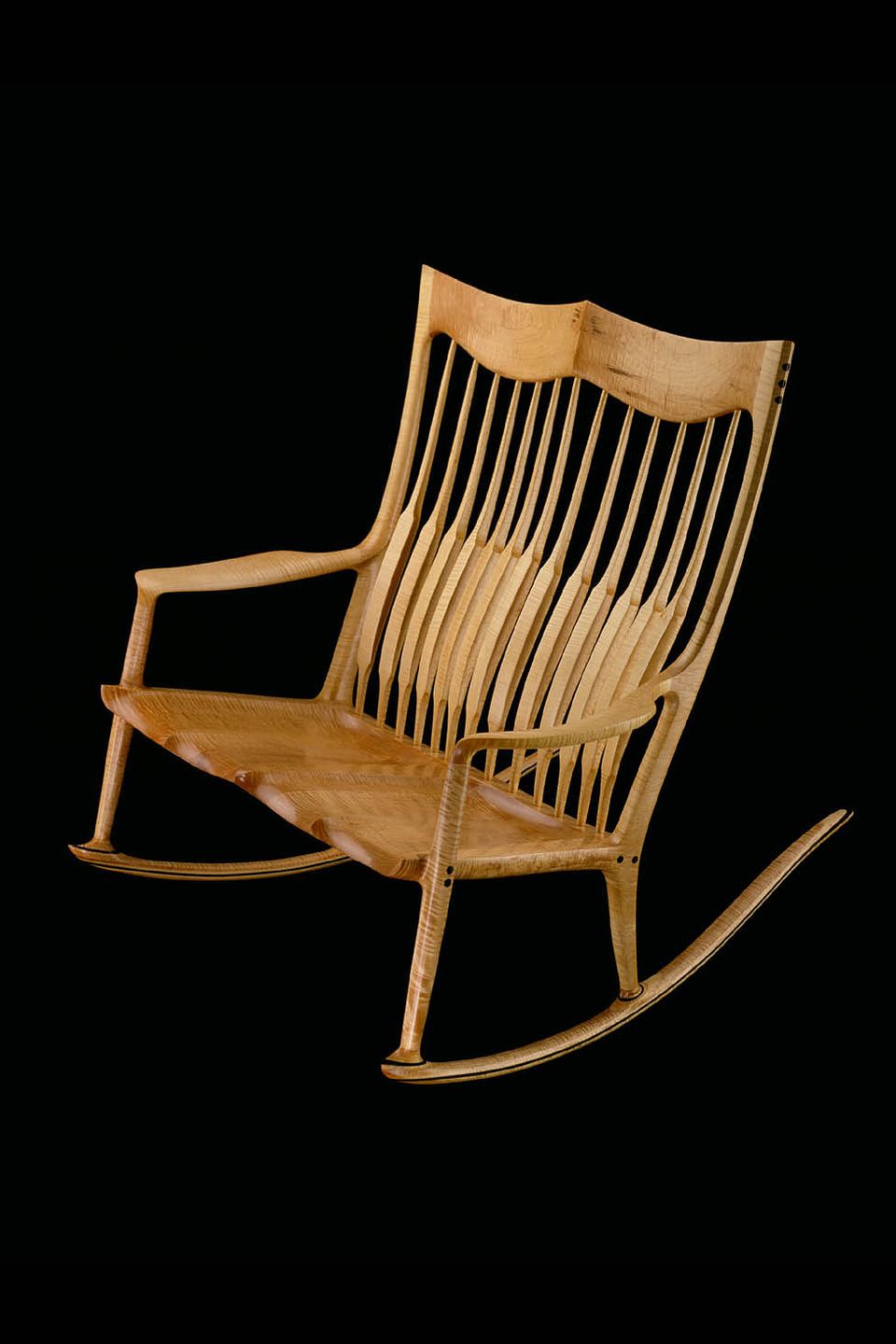
This post is part of an ongoing series on Eye Level: The Best of Ask Joan of Art. Begun in 1993, Ask Joan of Art is the longest-running arts-based electronic reference service in the country. The real Joan is actually many people from our museum’s Research and Scholars Center. These experts answer the public's questions about art. Last year, they began posting questions on Twitter and made the answers available on our Web site.
Question: I recently discovered the furniture maker Sam Maloof. How can I find out more about him and his work?
There are 13 pieces by Sam Maloof located in the Smithsonian American Art Museum. Also, in 2002 the American Art Museum held a solo exhibition of Maloof's work. You might be interested in visiting American Art's online exhibition, Maloof on Maloof.
The following biographical information is from the brochure for the Smithsonian American Art Museum exhibition The Furniture of Sam Maloof, September 14, 2001—January 20, 2002:
"Sam Maloof is America's best known contemporary furniture craftsman. While he is self-taught as a woodworker, both his name and his work are instantly recognizable. No other twentieth-century studio furniture maker has received as many awards for design and craftsmanship. In 1985 he was named a John D. and Catherine T. MacArthur Foundation Fellow. He is the only craftsman to have received this coveted 'genius' award.
Sam Maloof was born in 1916 in Chino, California, to Lebanese immigrant parents. He began making furniture in 1949, after working as a graphic artist in industry, serving in the U.S. Army during World War II, and working as a studio assistant to the artist-designer Millard Sheets, of Claremont, California. During the 1950s, he was a key member of the innovative, Los Angeles-area modern design movement; his work was included in the annual "California Design" shows, as well as other exhibits of contemporary-style home furnishings. With its warm tones, hand-sculpted details, and simple, timeless designs, Maloof's walnut furniture perfectly complemented the spare, open-plan interiors of the sleek, modernist Southern California residences built during that decade.
Leading West Coast architects and decorators, as well as style-conscious homeowners, regularly ordered pieces from his small, one-man workshop, and his classic design attracted nationwide attention in the press.
In 1957 the American Craft Museum in New York launched its first exhibition of studio craft furniture, "Furniture by Craftsmen," and Maloof was invited to participate. The same year, he also attended the first national conference of the American Crafts Council (ACC) at Asilomar, California. As crafts gained popularity and credibility on both coasts, Sam discovered he was part of a thriving national movement. At Asilomar, participants discovered their shared dedication to working with their hands in an increasingly technological society. Maloof soon emerged as a leader; he served for a quarter century as an ACC trustee and during that time spoke and wrote tirelessly to promote the moral and spiritual values of handcraftsmanship. In 1969 he expressed his credo: "I want to be able to work a piece of wood into an object that contributes something beautiful and useful to our everyday living. To be able to work with materials without destroying their natural beauty and warmth, to be able to work as we want—that is a God-given privilege."
By 1970, Sam Maloof was acknowledged to be a leading member of the first generation of post-World War II studio furniture makers. These pioneers shared an aesthetic based on a modernist reverence for the beauty of solid hardwoods, a love of simple, sculptural shapes, a rejection of applied ornament and historical style, and above all, a dedication to function. Their influence remains strong among the postmodern "second generation" of studio furniture makers, even though this group employs mixed materials, creates personally expressive or historically based pieces, and often rejects function. For this generation, the quality of Maloof's work and the success of his business operation confirmed that woodworking was a viable way of life."
In addition, the Smithsonian's Archives of American Art has a 2002 oral history interview with Maloof that might be of interest to you. You can read a transcript of this interview on the Archives's website at: http://www.aaa.si.edu/collections/interviews/oral-history-interview-sam-maloof-12518.
For further information on Maloof and his furniture you might enjoy taking a look at the catalogue that accompanied his exhibition at American Art, The Furniture of Sam Maloof by Jeremy Adamson.


















